In mid to late summer, I usually see a common problem with tomatoes: once-perfect fruits on the vine suddenly splitting or cracking.
While you can usually still eat the damaged tomatoes (especially if you pick them soon after they split), it’s a frustrating problem to have because it’s caused by rapid changes in moisture levels, which are often out of your control.
The damaged skin is a physiological condition that can usually be blamed on rain. After a dry summer, a sudden downpour allows the plant to take up way more water than usual. As a tomato takes up water, the fruit expands faster than its skin can stretch, causing the skin to split. What you get are growth cracks or “bursting” of the fruit.
But it’s not always rain that causes this—in hot weather, you might find yourself watering more often or more heavily as well, leading the fruits to swell and split.
The damage may appear as radial cracks (which extend from the stem down the sides of the fruit) or concentric cracks (which show up as a circular pattern at the top of the tomato, ringing the stem end). If fruits are left on the vine, rot may set in at the cracks or the cracks may heal over with brown “scar” tissue.
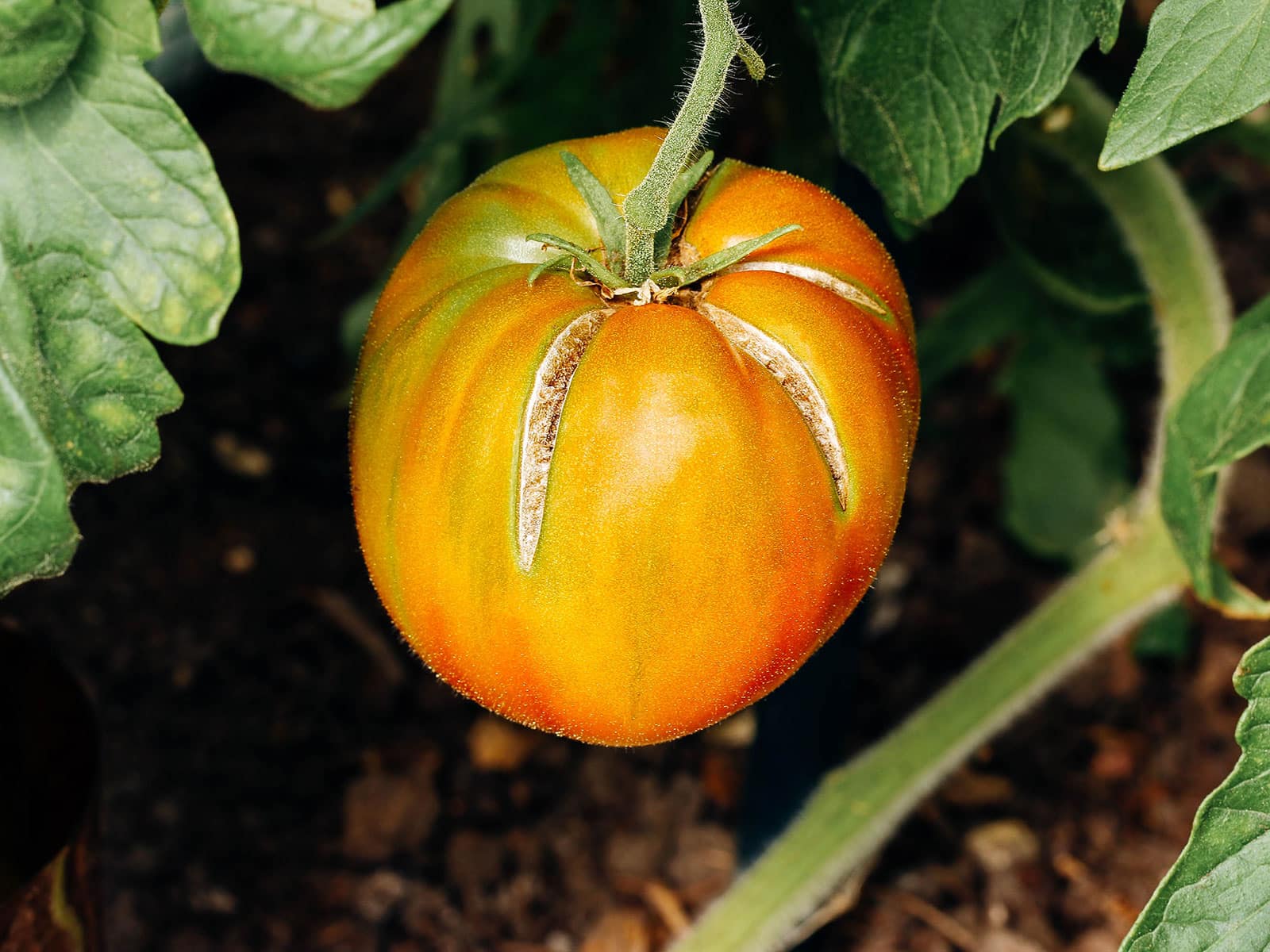
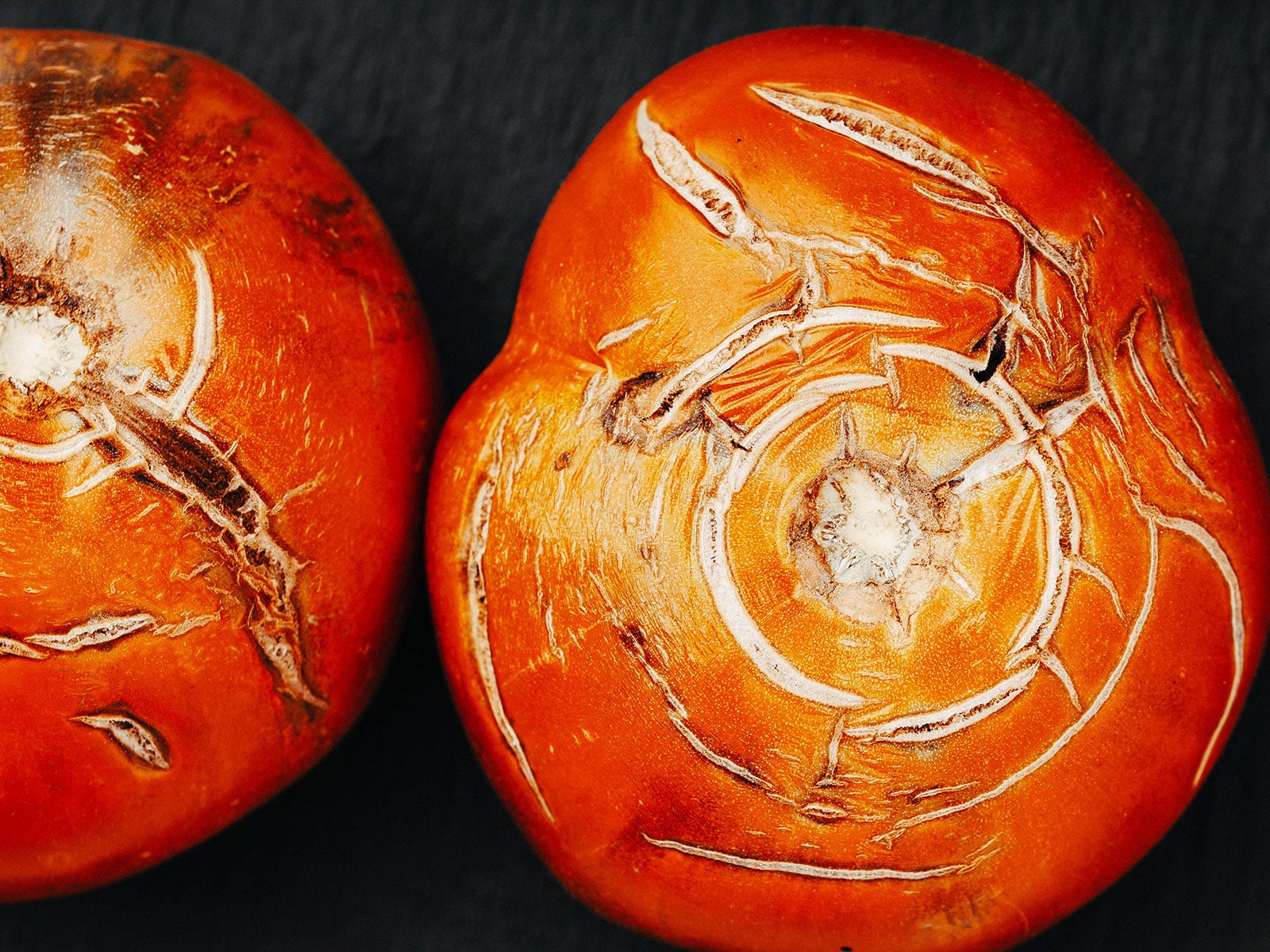
The good news is, there is a way to keep your tomatoes from splitting as often—or altogether.
First, make sure your garden beds are nicely mulched to help retain moisture. Water your plants deeply (but less frequently) to train the roots to reach down in the soil for moisture; this will help the plants survive heat waves (and free you from needing to water so much).
Second, if you go outside and harvest your almost-ripe tomatoes before any forecasted rain, you can save them! As I wrote about previously, tomatoes can be ripened indoors with no difference in flavor or texture.
The notion that a vine-ripened tomato is superior in taste is actually a myth—and likely brought on by our own psychological biases. The best time to pick a tomato, if you want to ensure quality fruit, is right when the skin starts to “blush” (show some color). At that point, you can bring it inside to finish ripening on your counter (and you’ll have beat all the birds and squirrels that want to get to it first!).
If, however, you miss the window and a heavy rain comes, be sure to harvest any split or cracked tomatoes immediately and ripen them the same way indoors. The defects might look ugly, but they don’t really alter the flavor and you can simply cut them out and compost those portions.
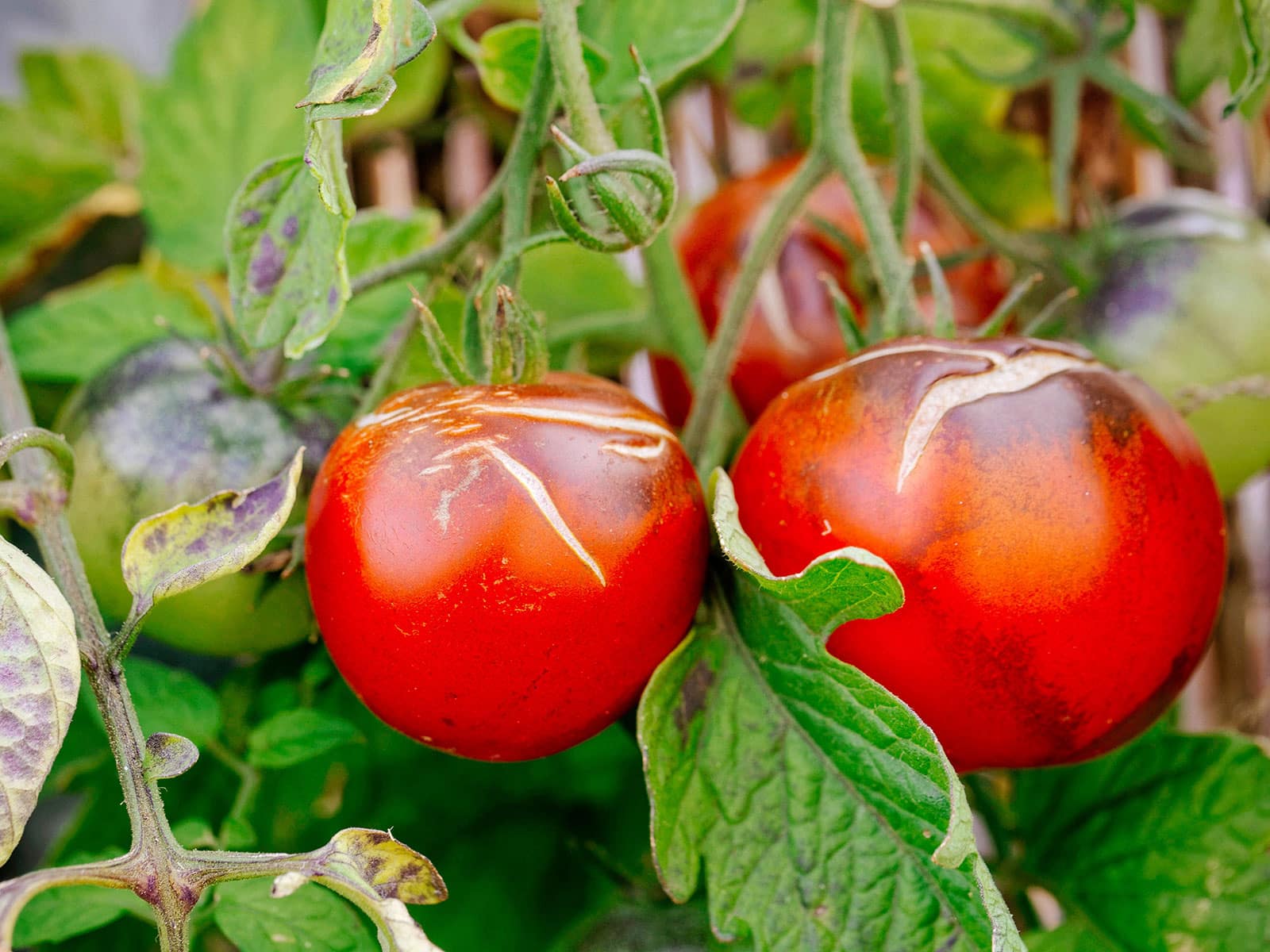
Cracks on tomatoes also look similar to (but aren’t necessarily the same as) another condition called catfacing. You can see what catfacing looks like here and learn how to keep it from happening to your crop.



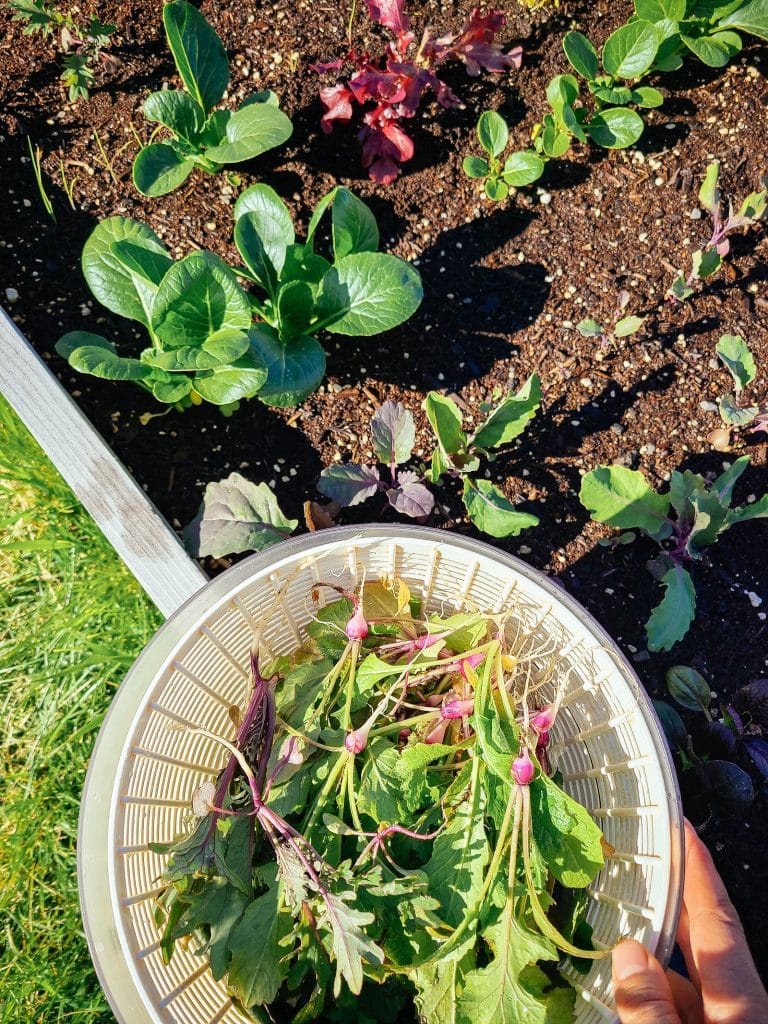
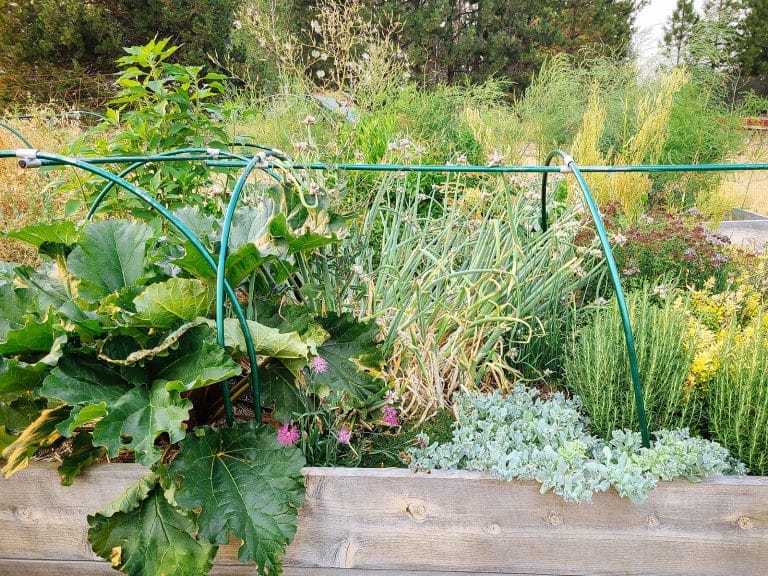

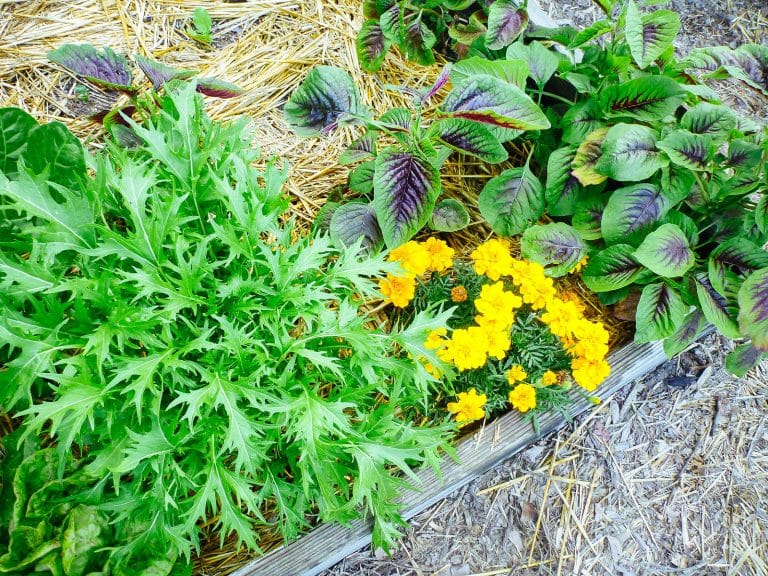






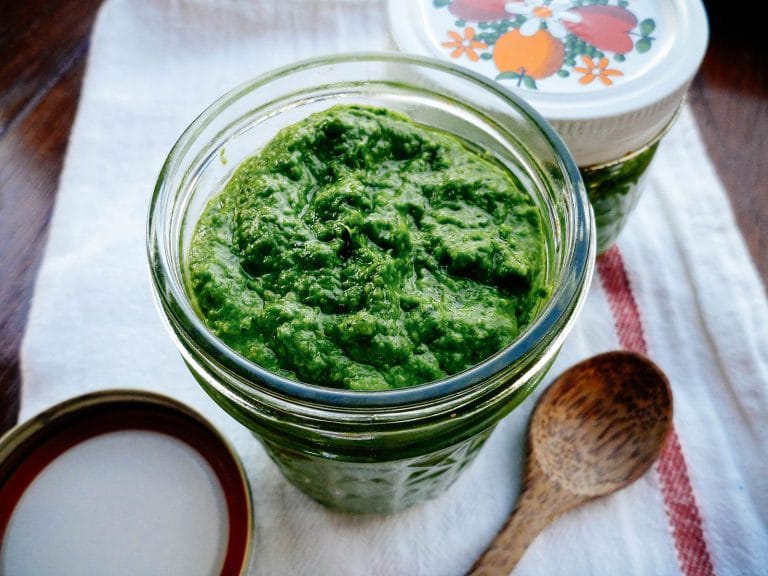


Here’s the crazy thing – this year in the Pacific Northwest (Skagit Valley, so milder summers than most areas of Oregon where I’m originally from, no heat waves to freak out about), we’re growing San Marzanos and Black Krim & Cherokee Purple tomatoes in the same raised bed, and it’s been a BANNER year for the San Marzanos (a rarity there’s been zero blossom end rot), but the non-plum BK and CP tomatoes are sparse on the vine and the few that have grown are massively cracked on top. A very weird thing since I don’t dare mess with a good San Marzano crop yet the big ones are rebelling like crazy even though they get the same amount of water…any thoughts? I’ve interspersed these for 20 years so it’s definitely a strange year for tomatoes…
Why do my tomatoes have tough skins?
Thanks
I had end rot and used wood ash to clear it up.